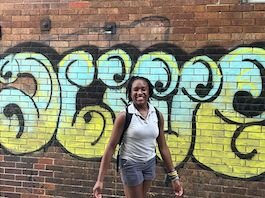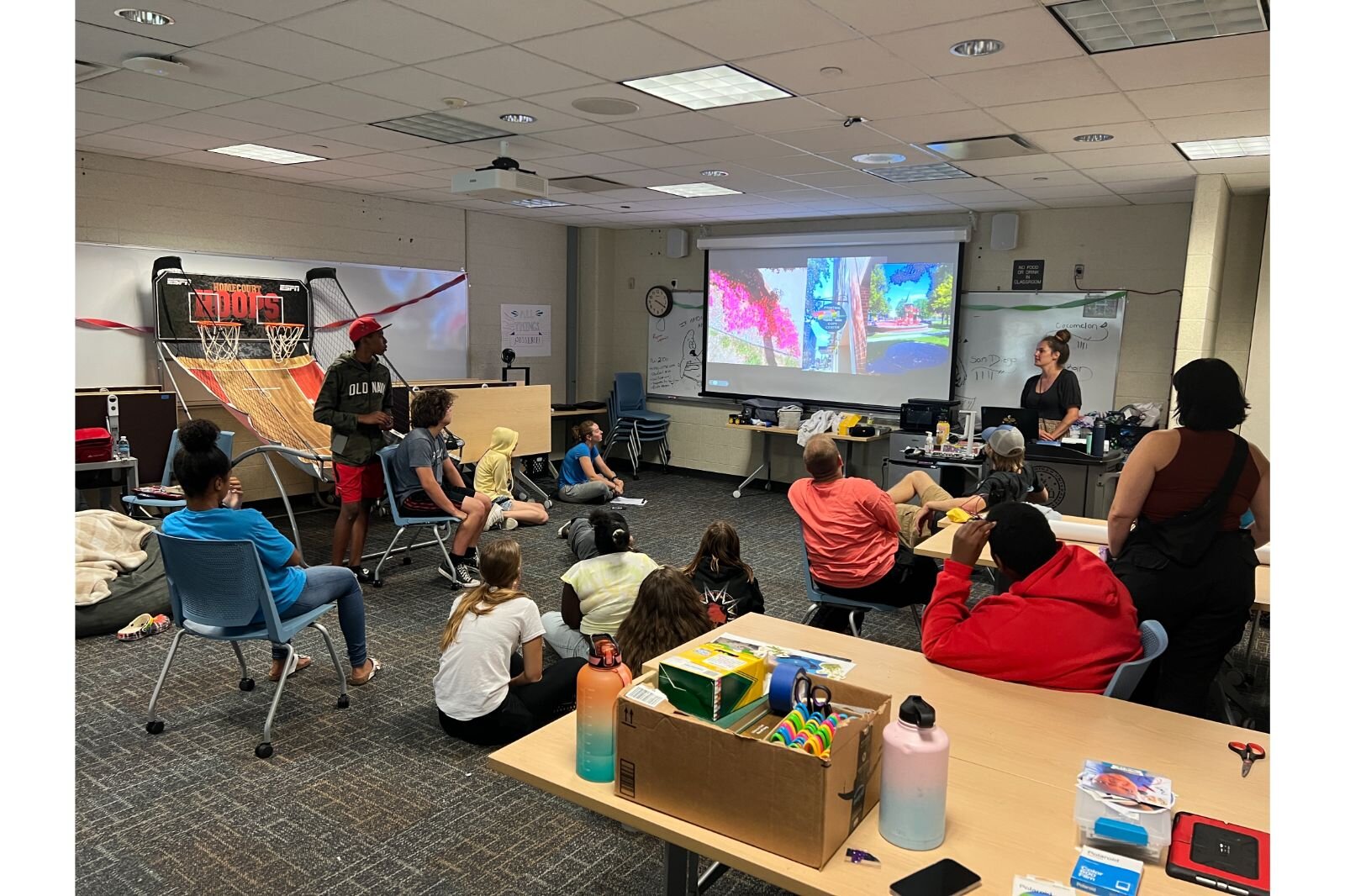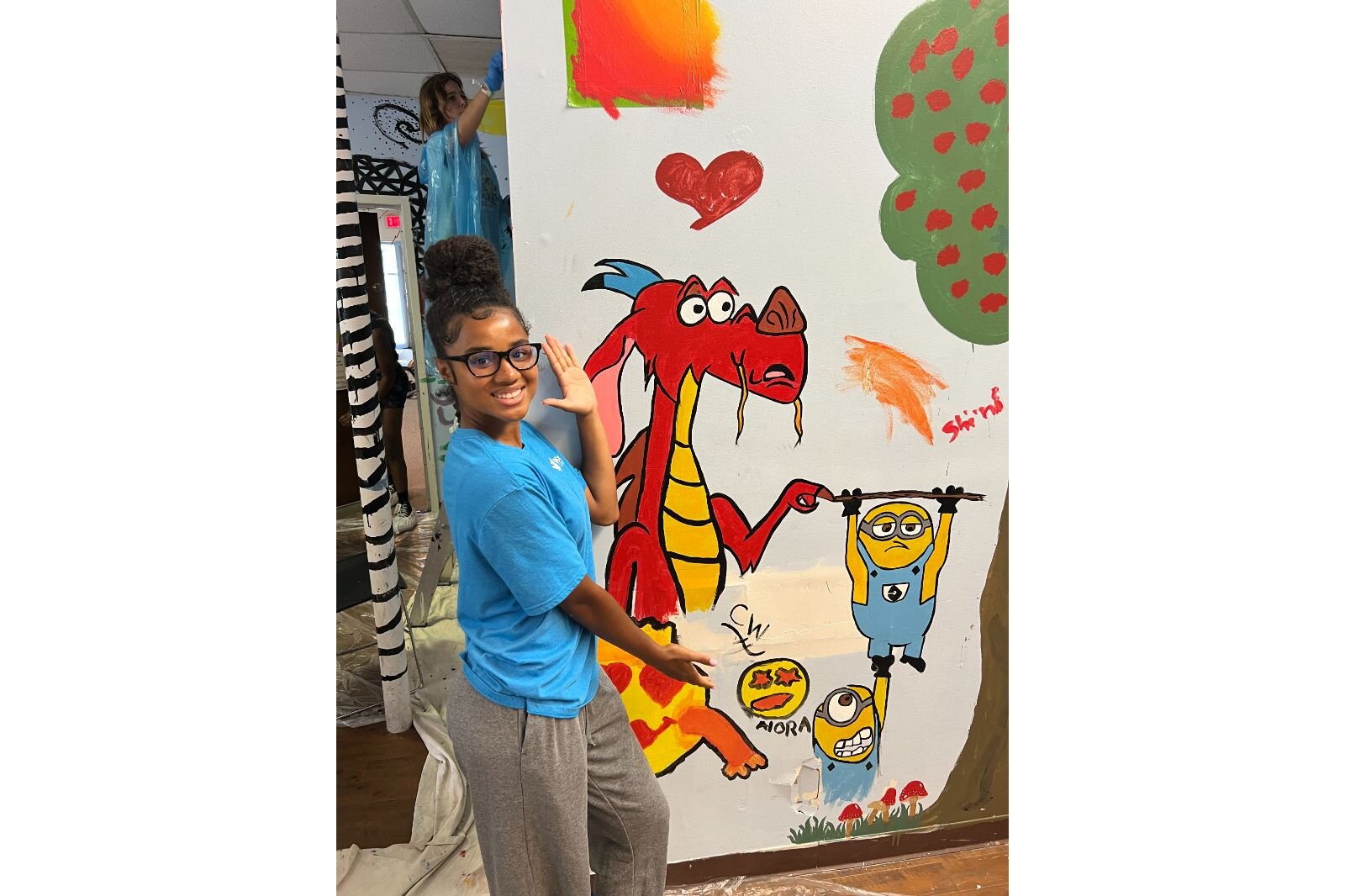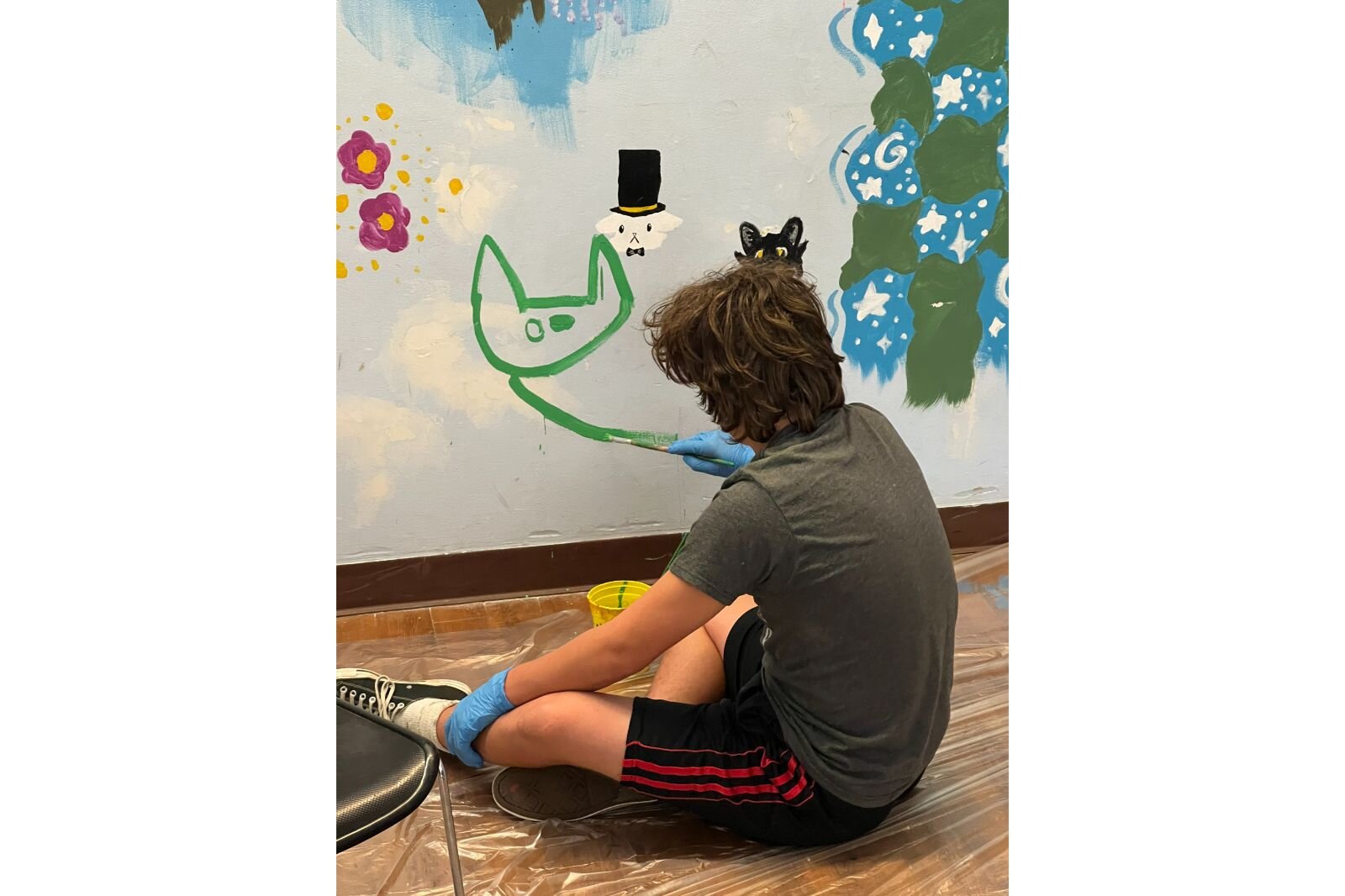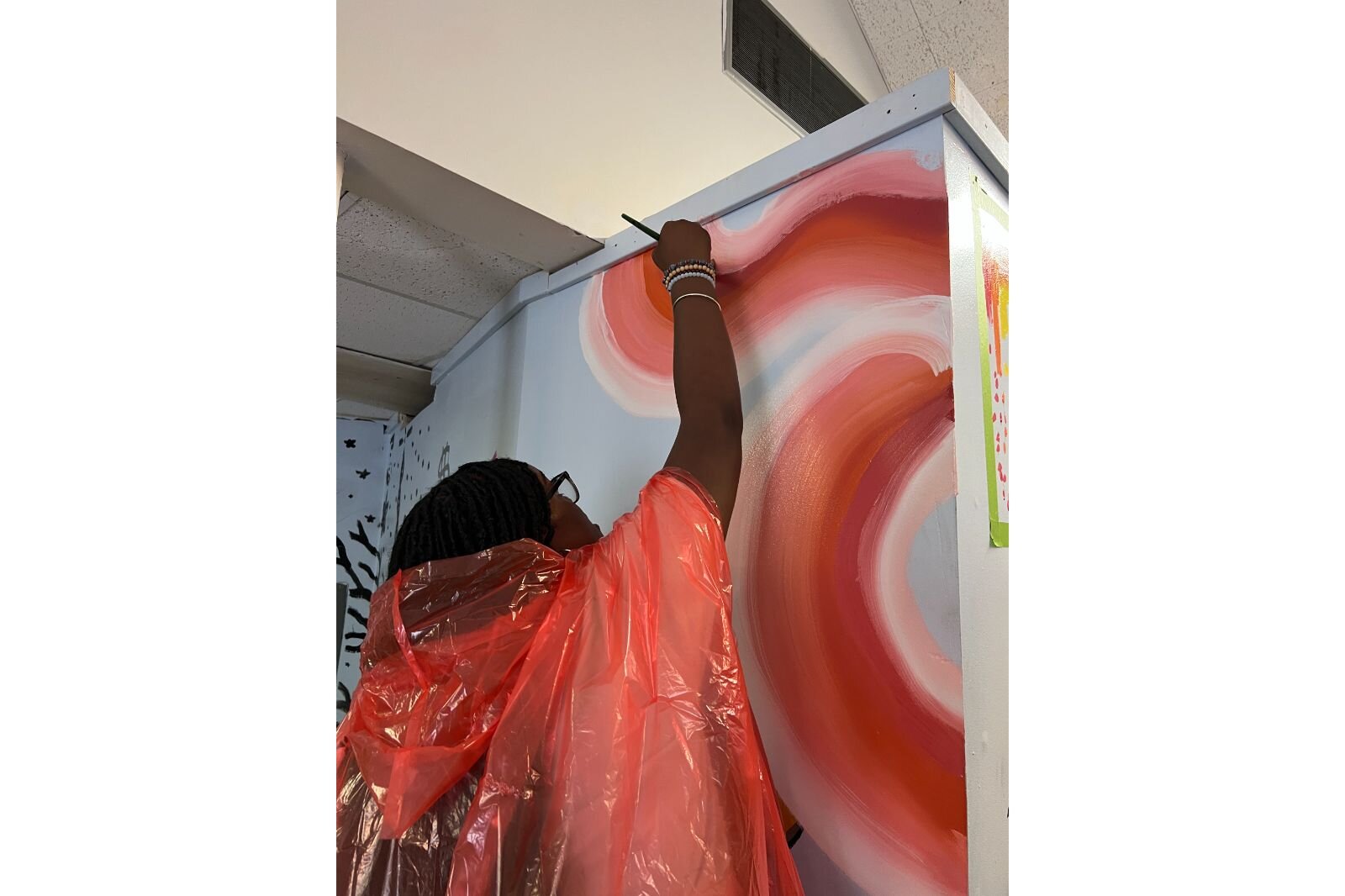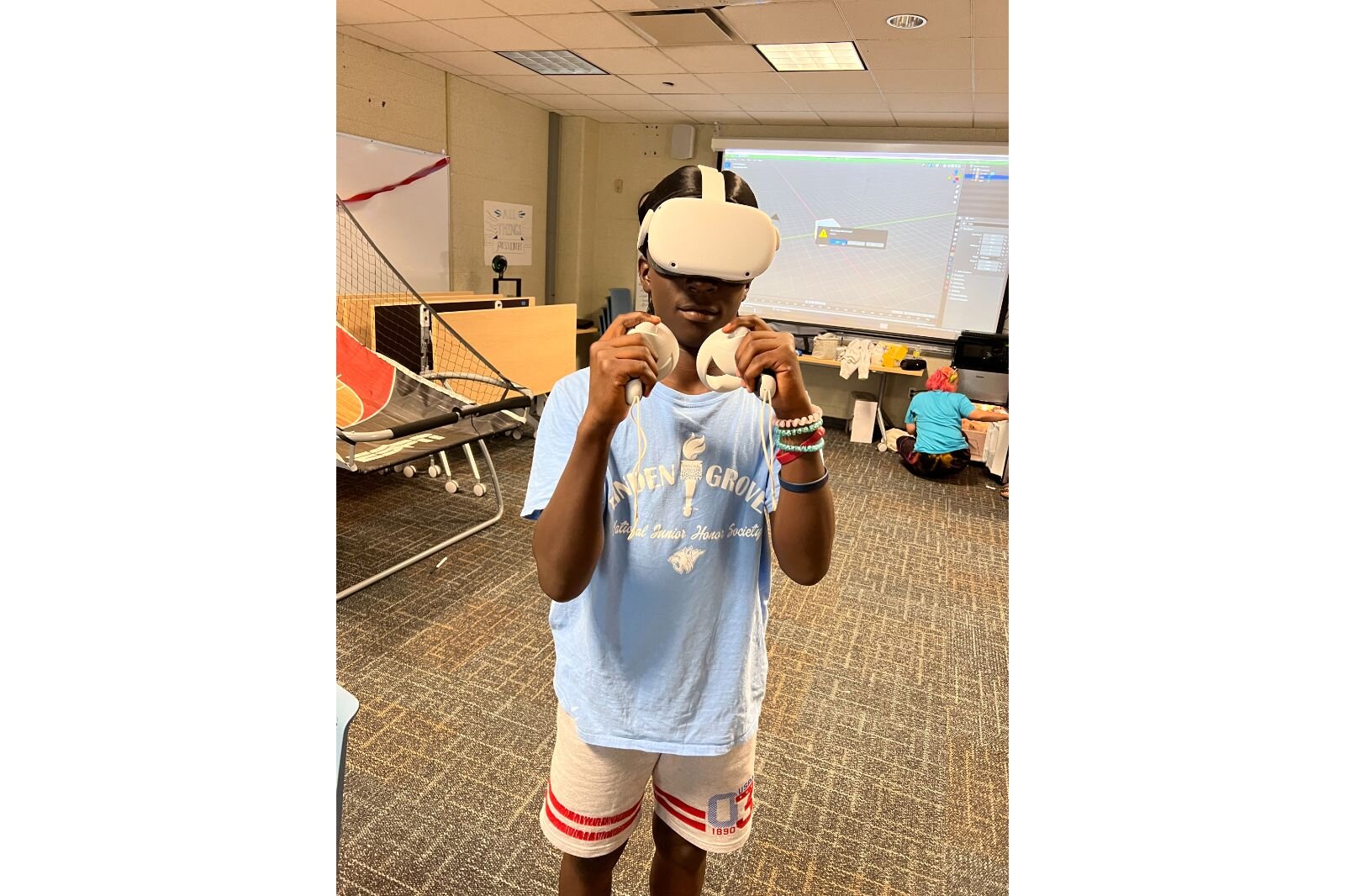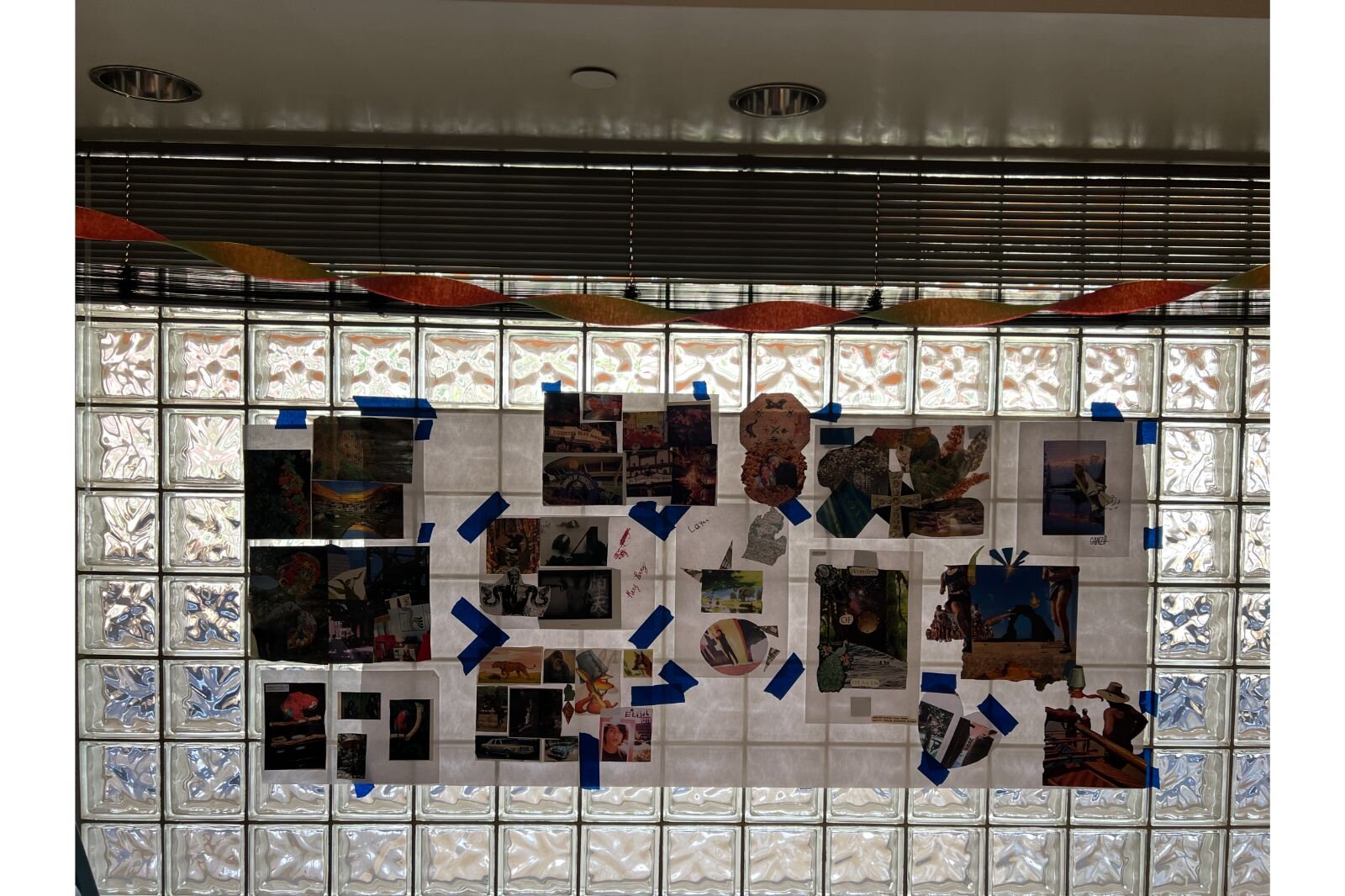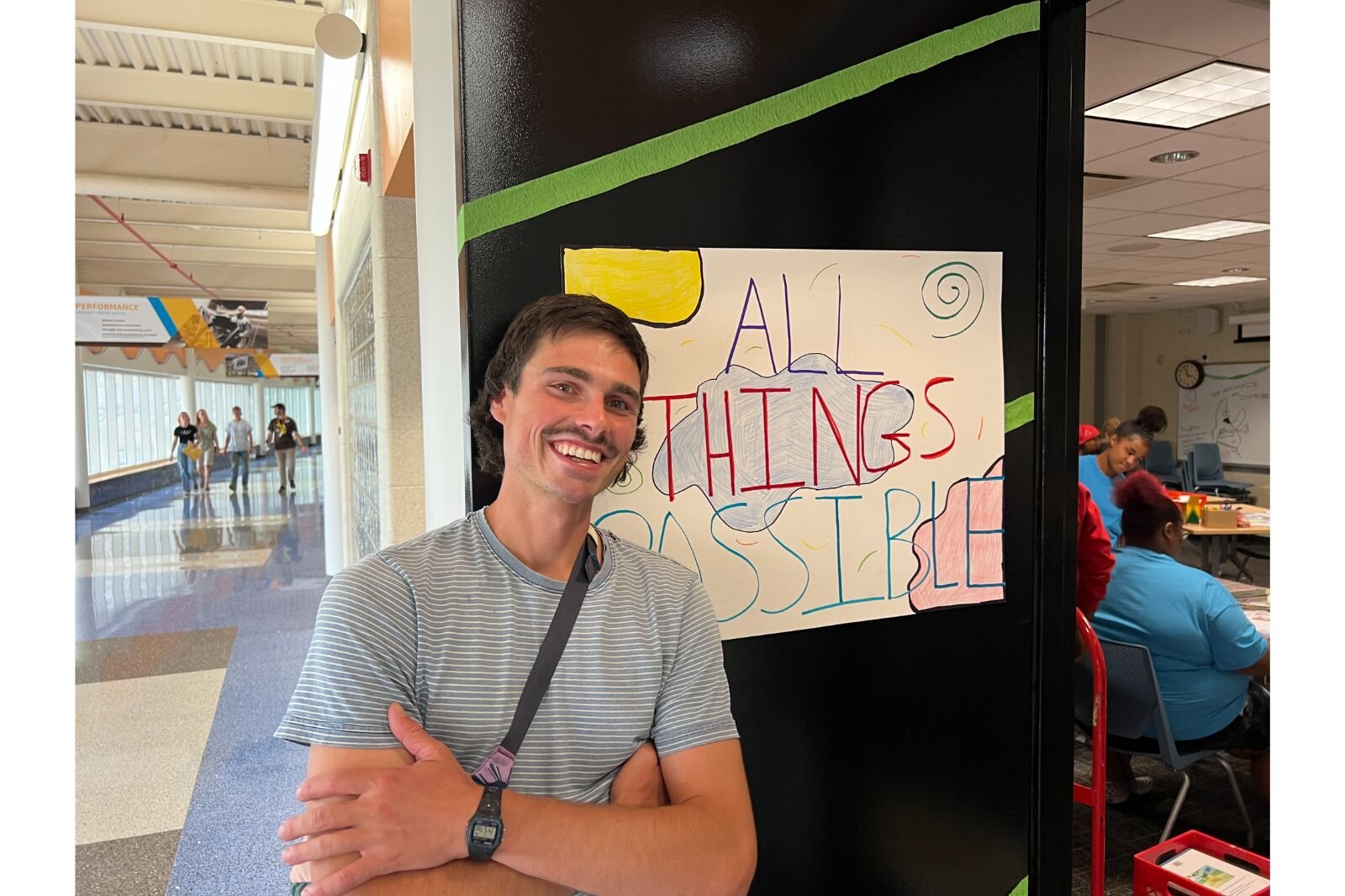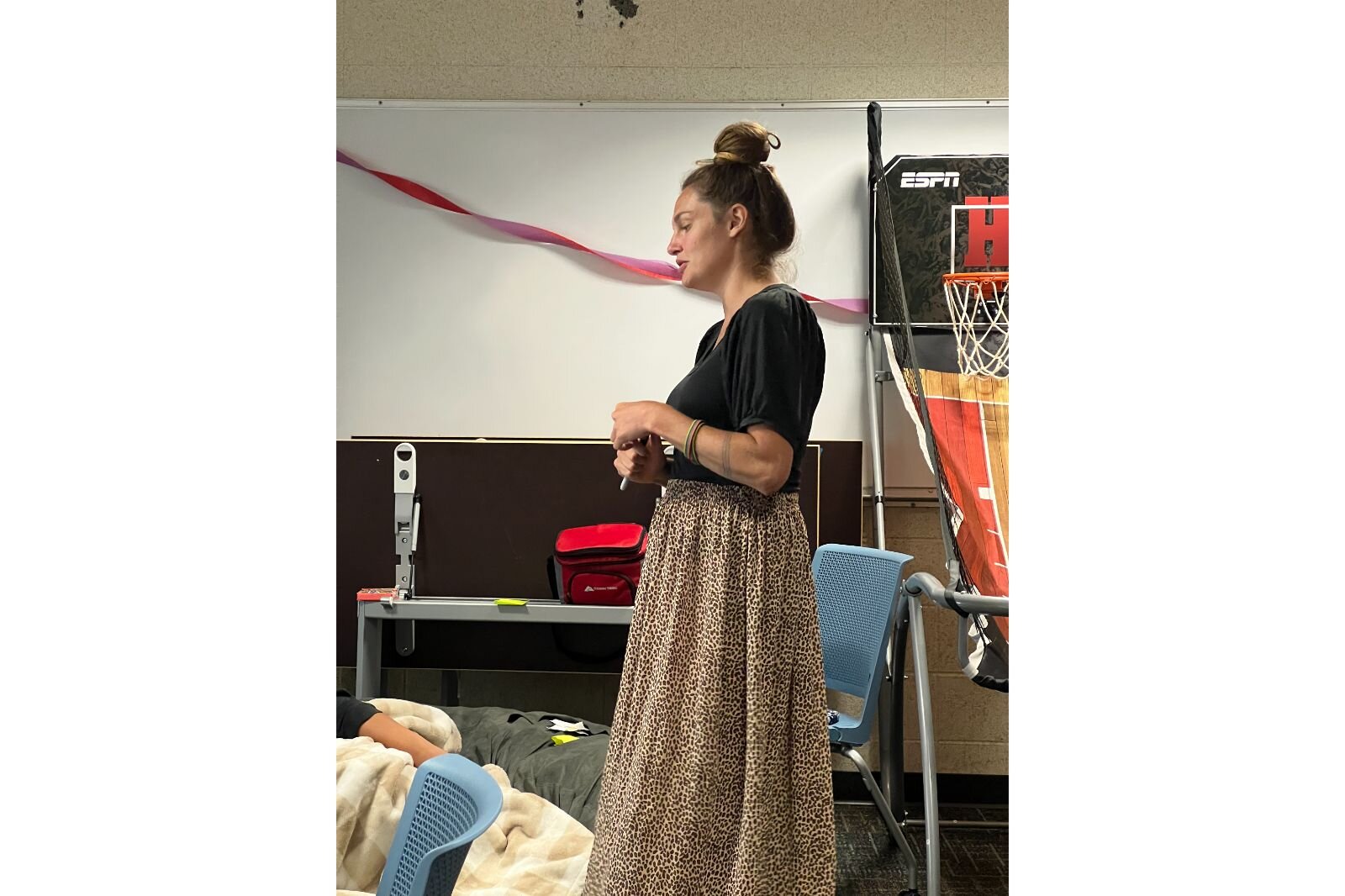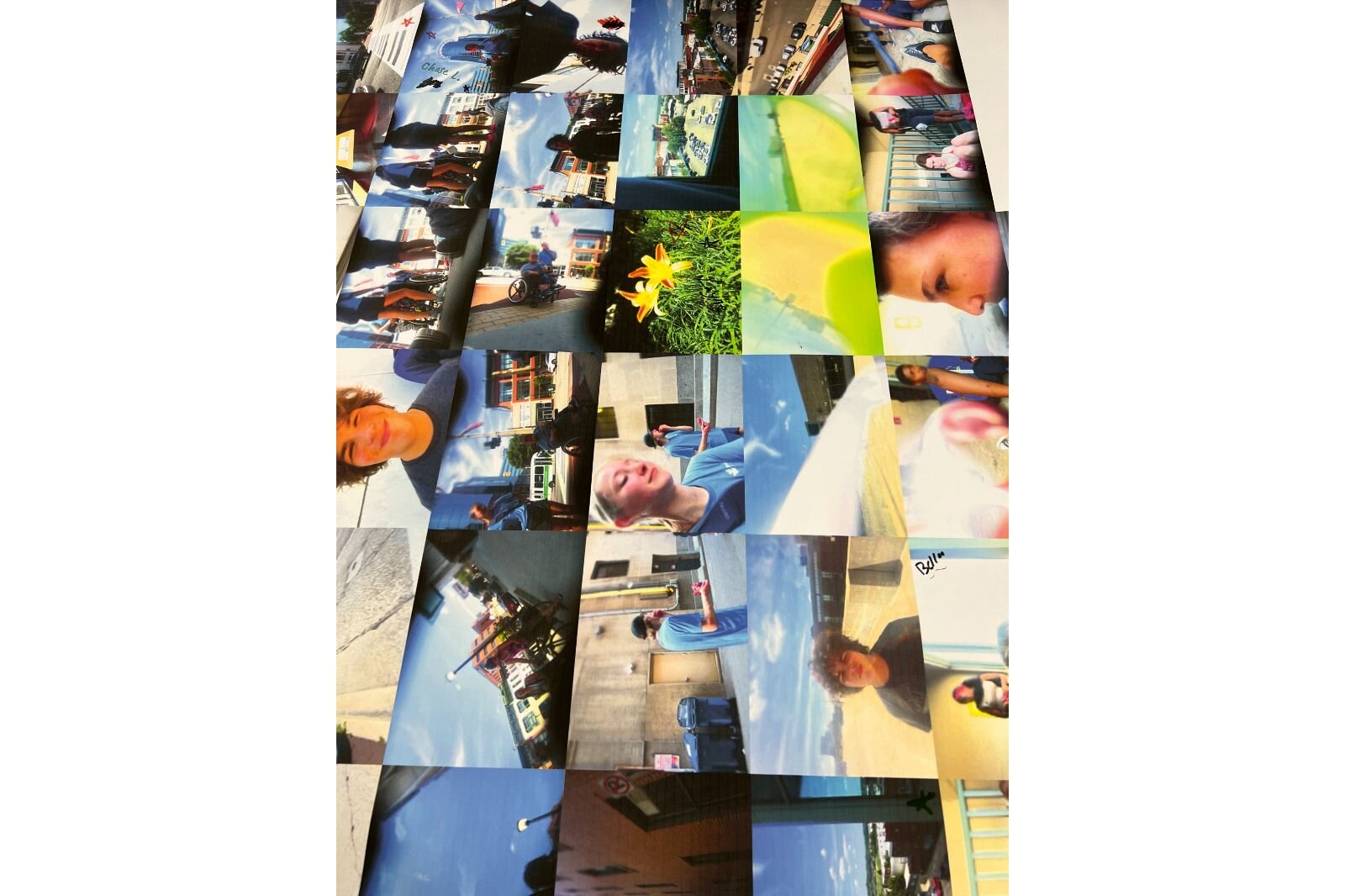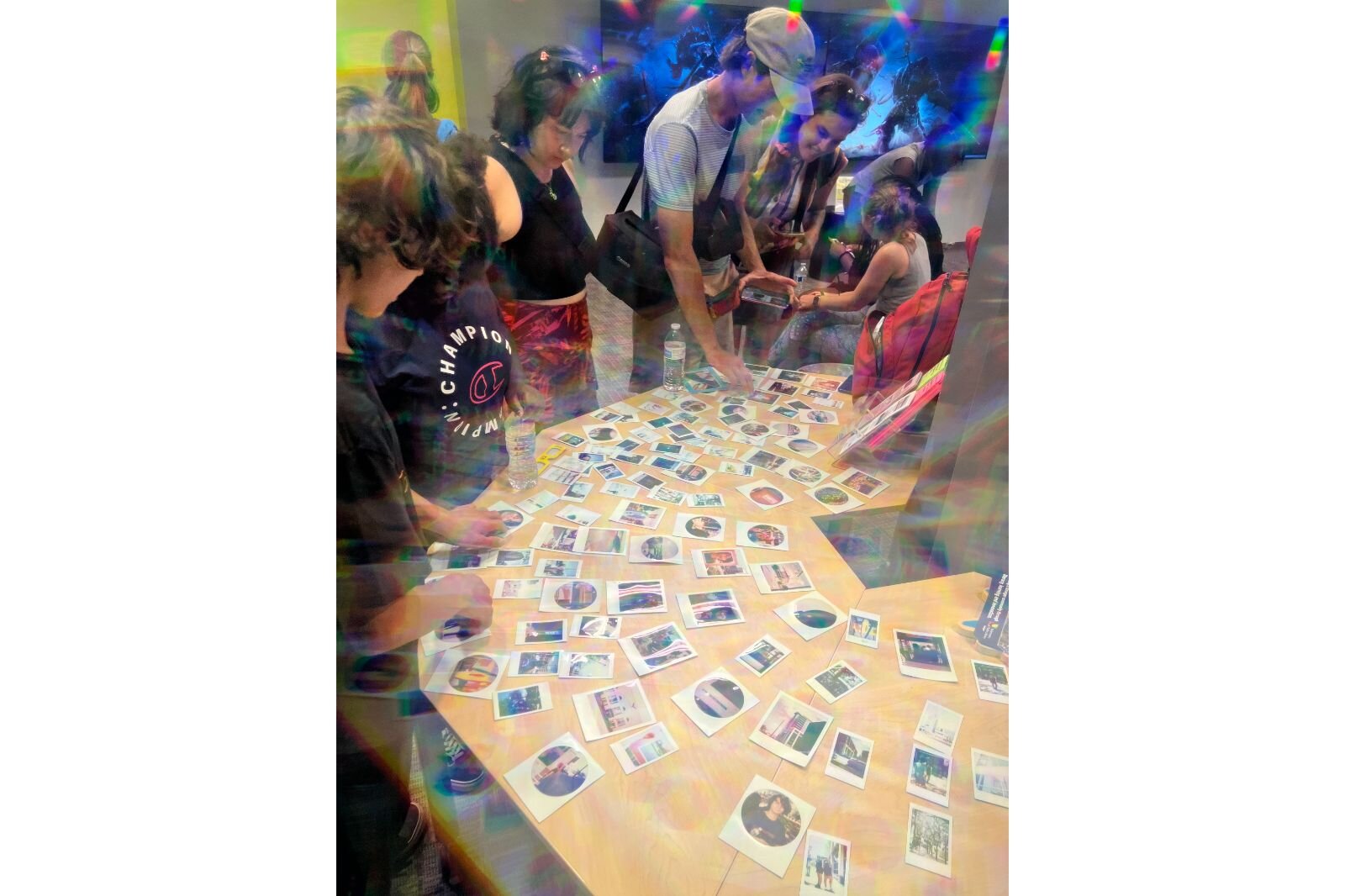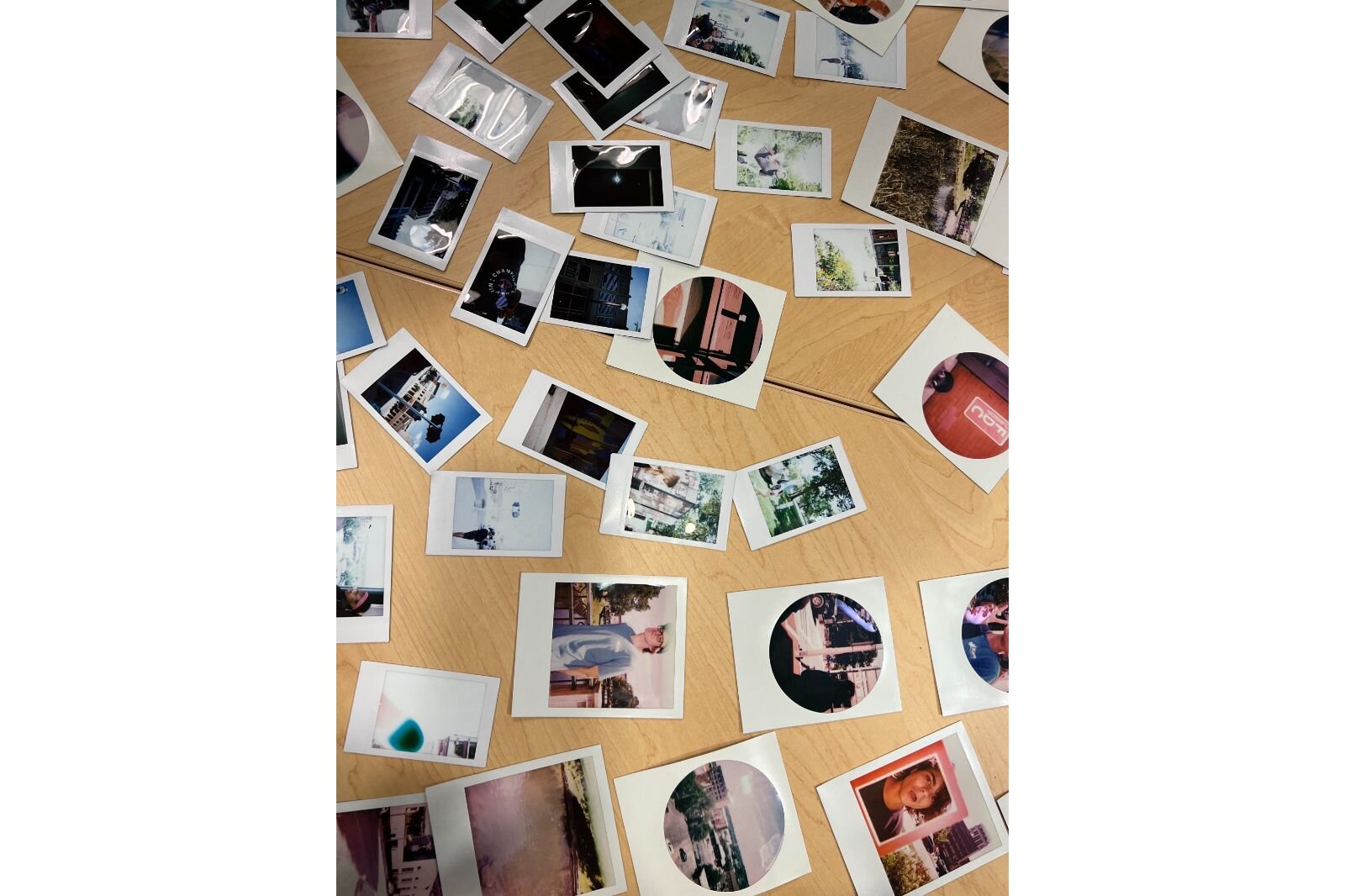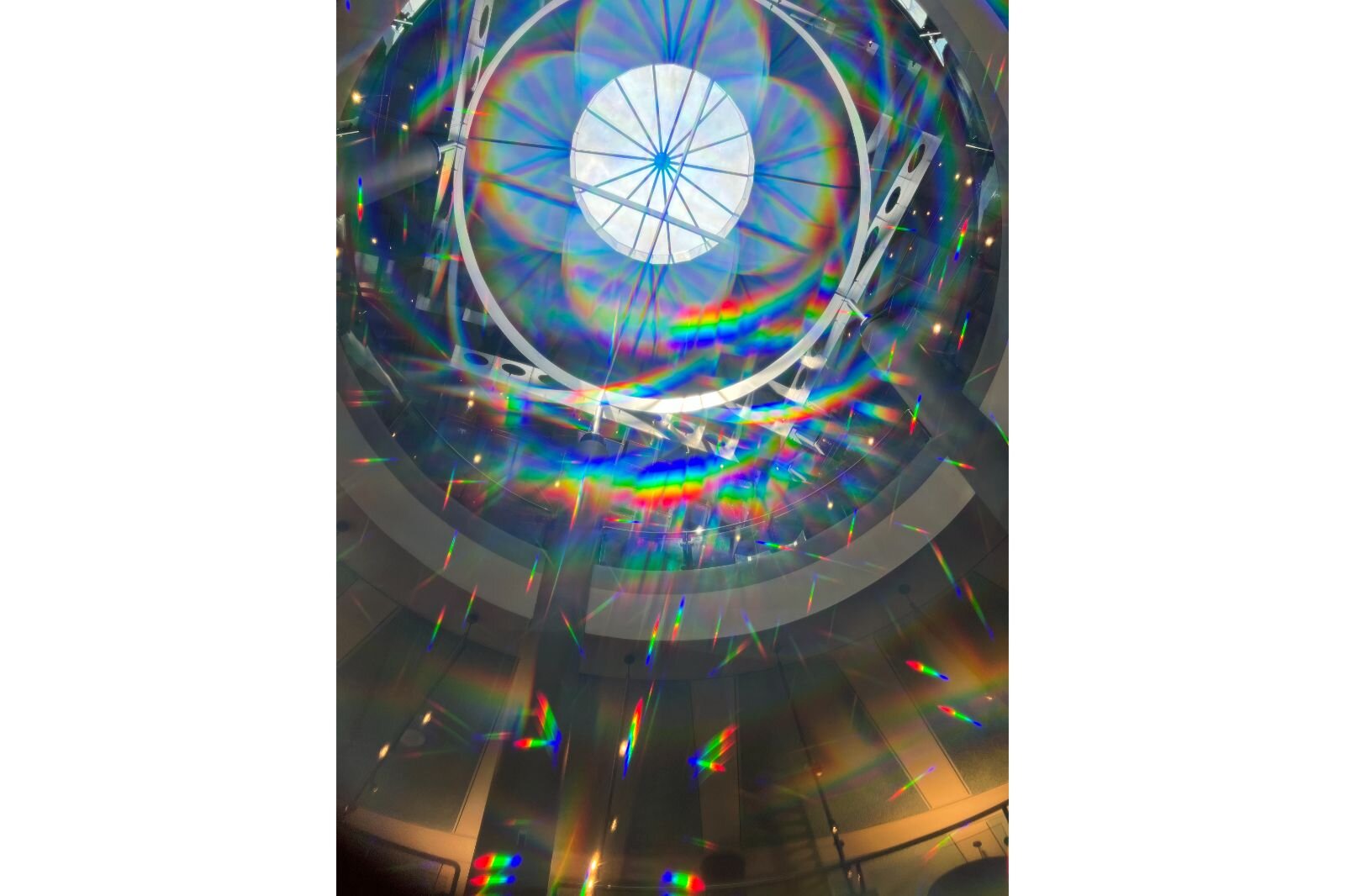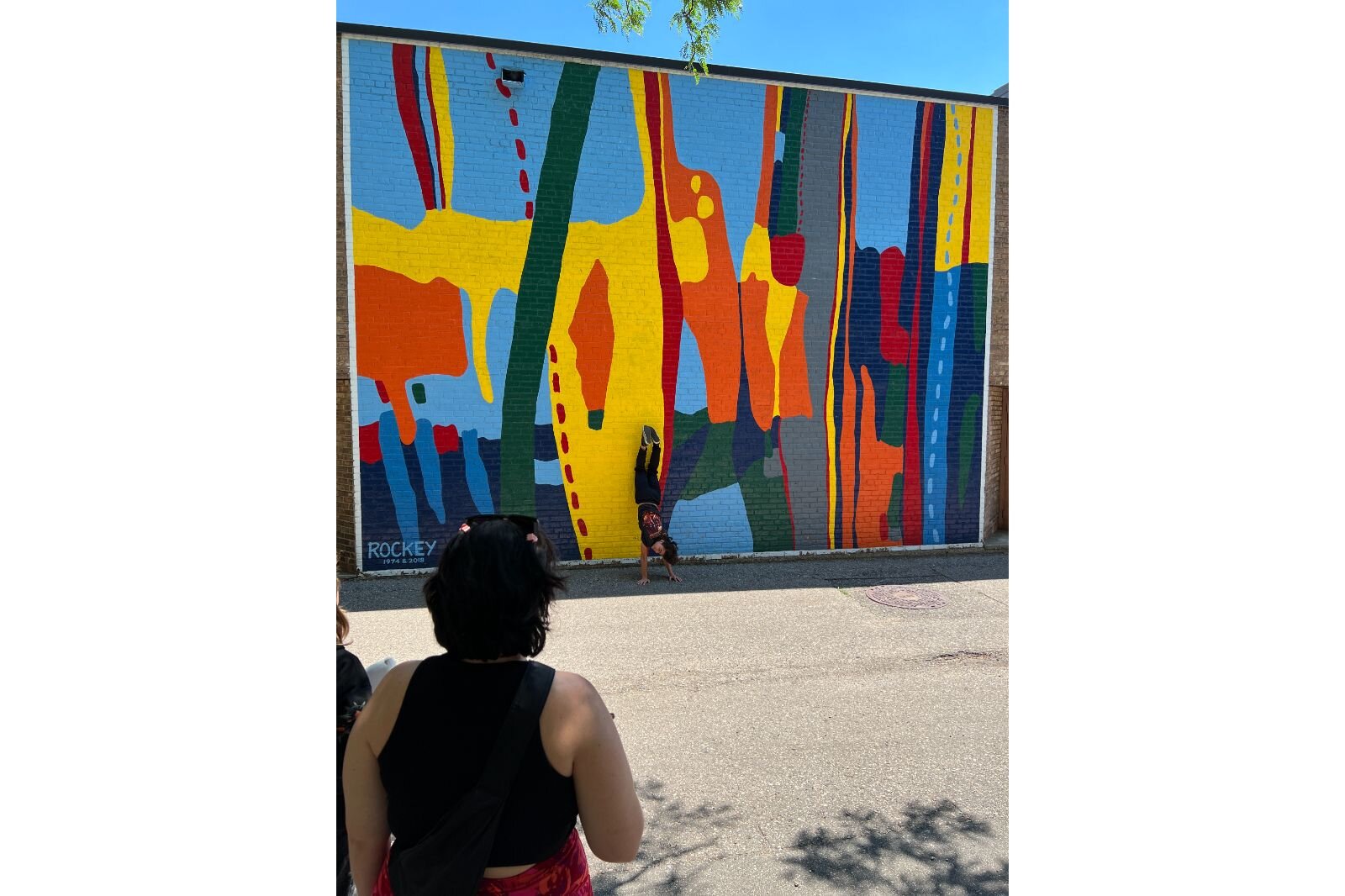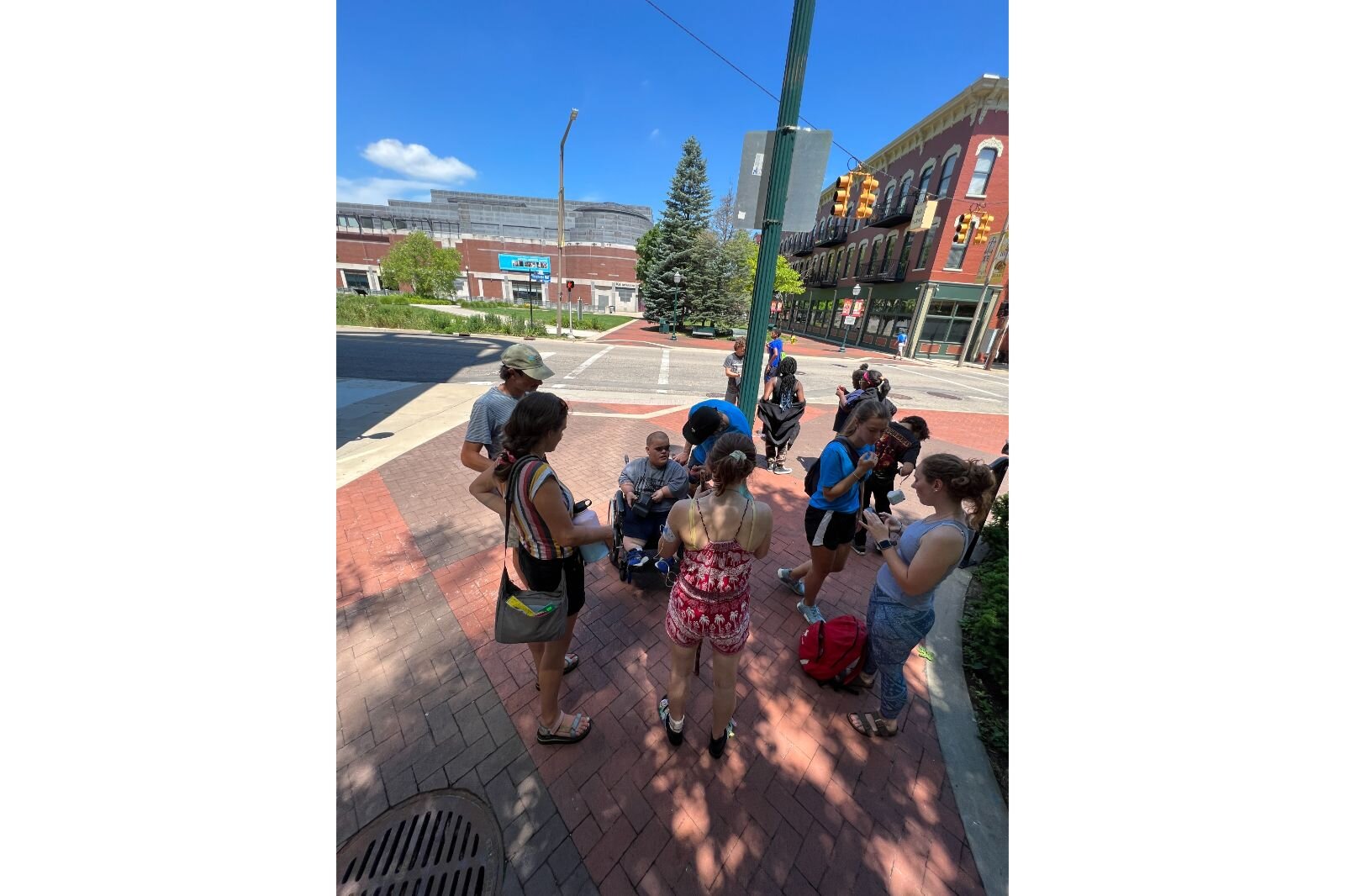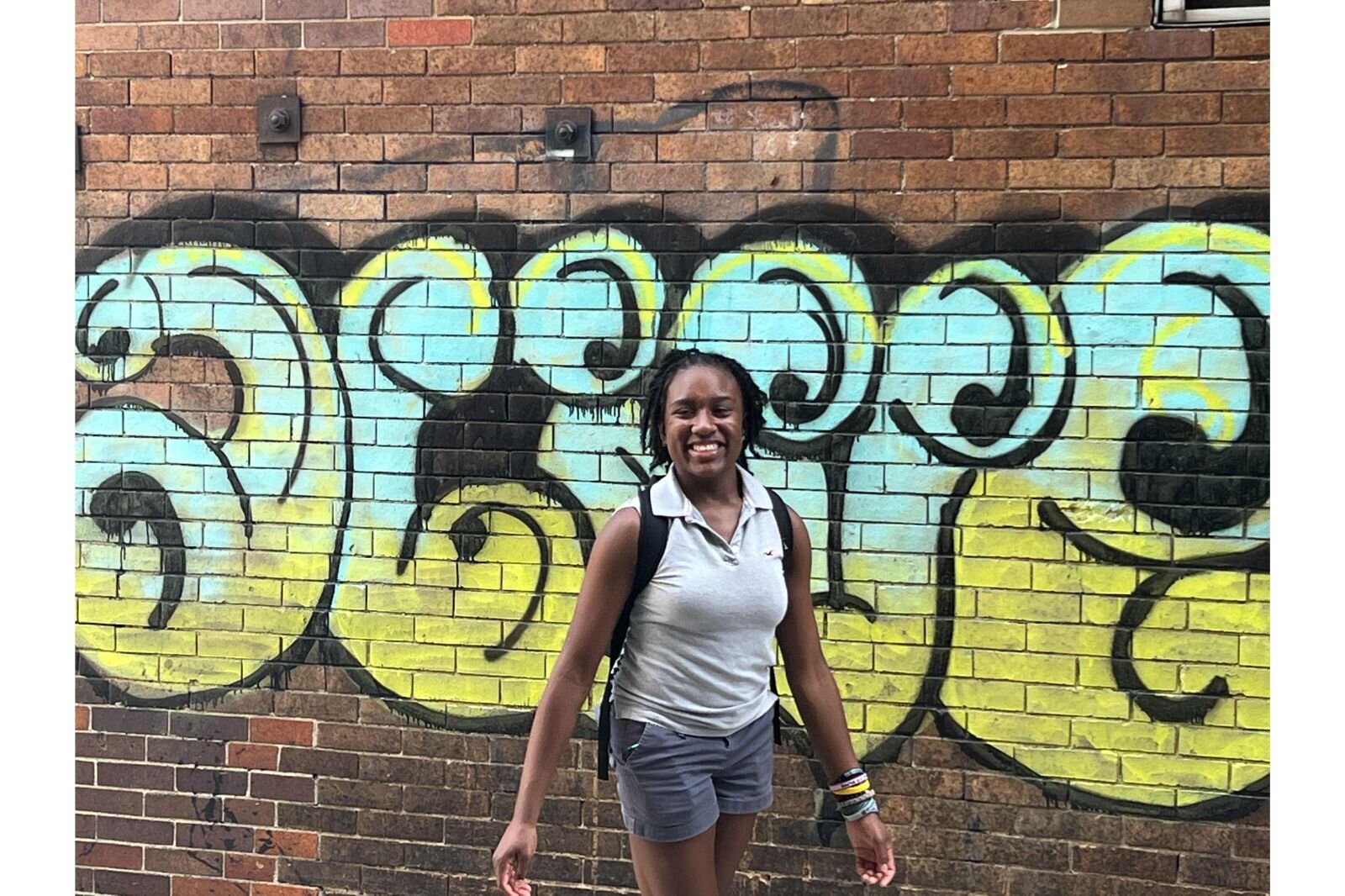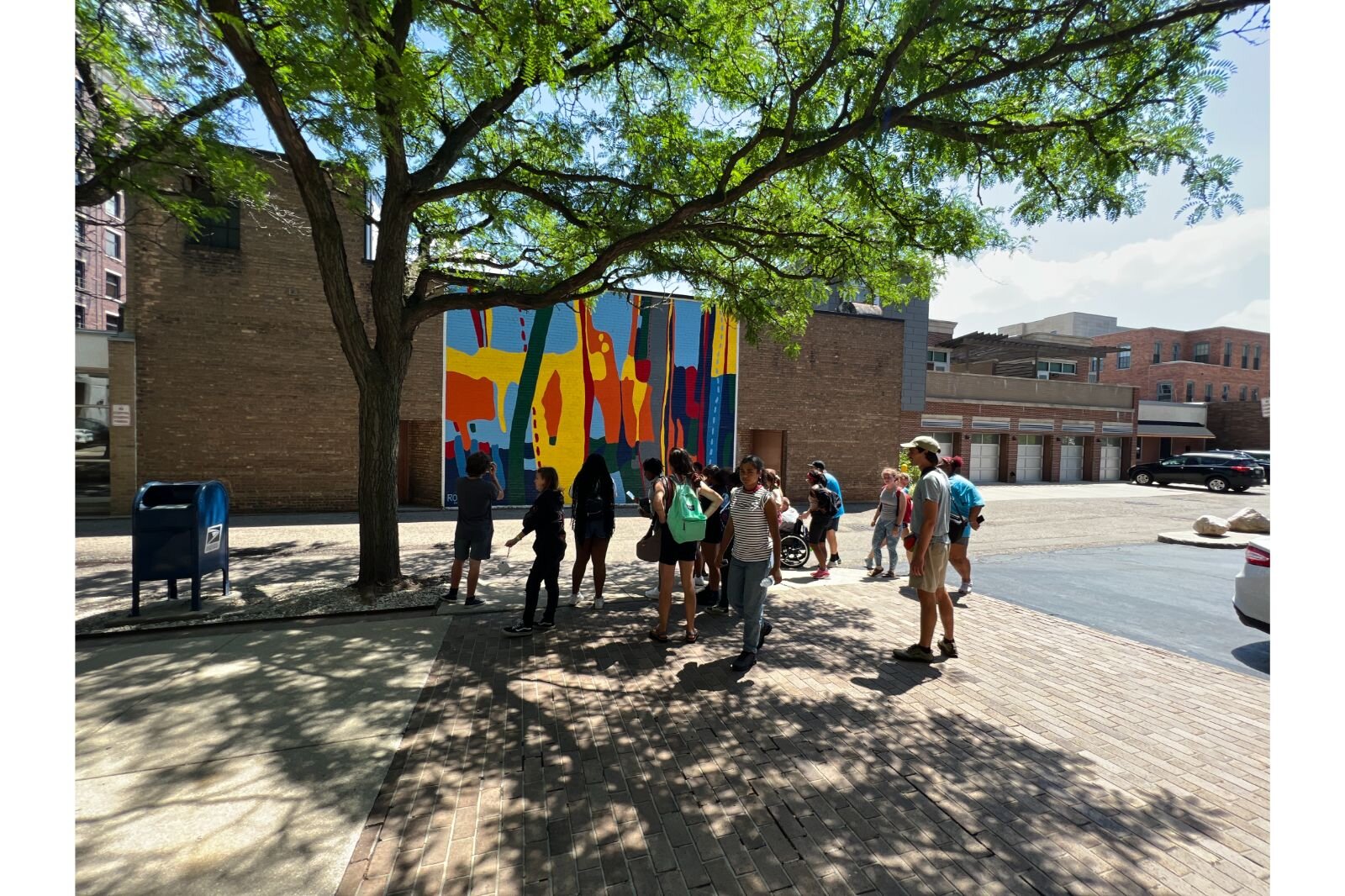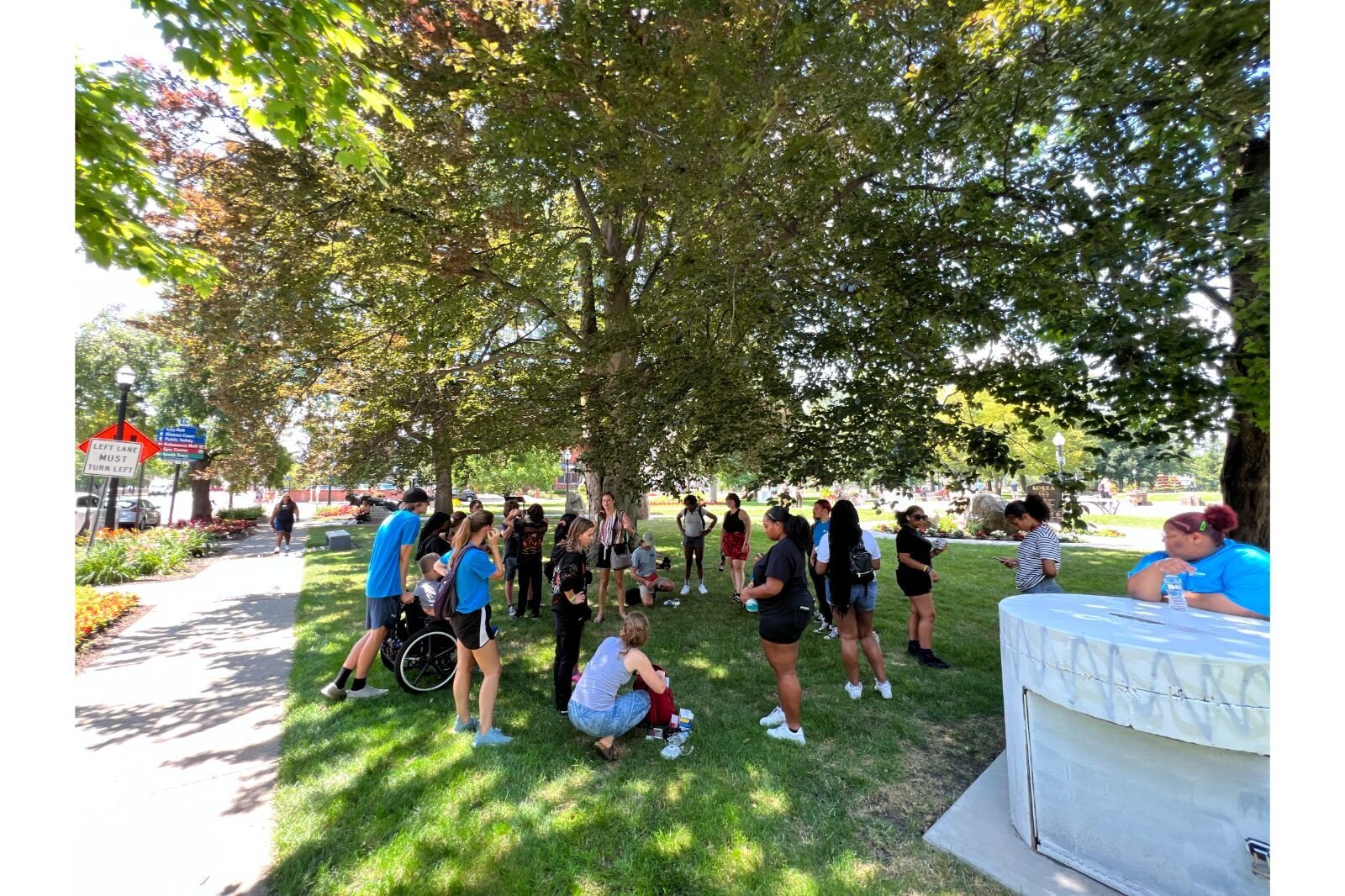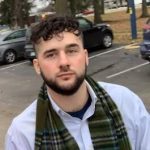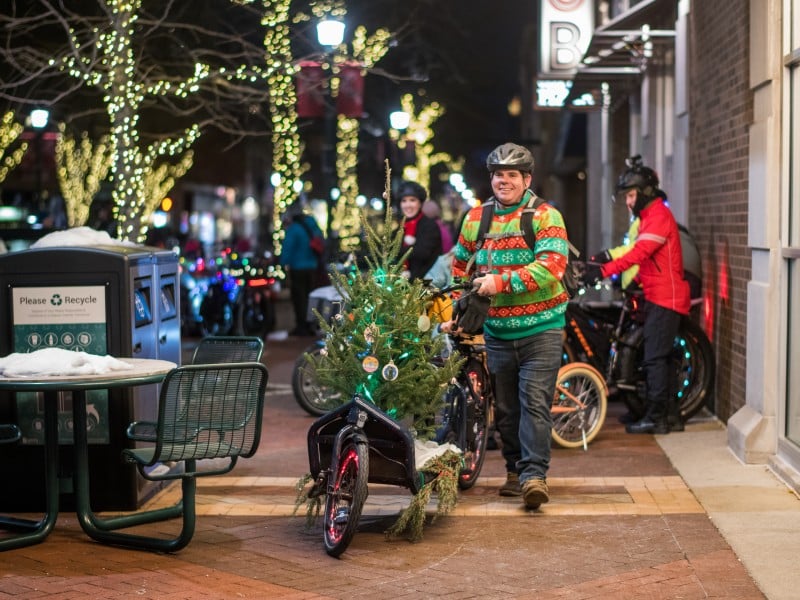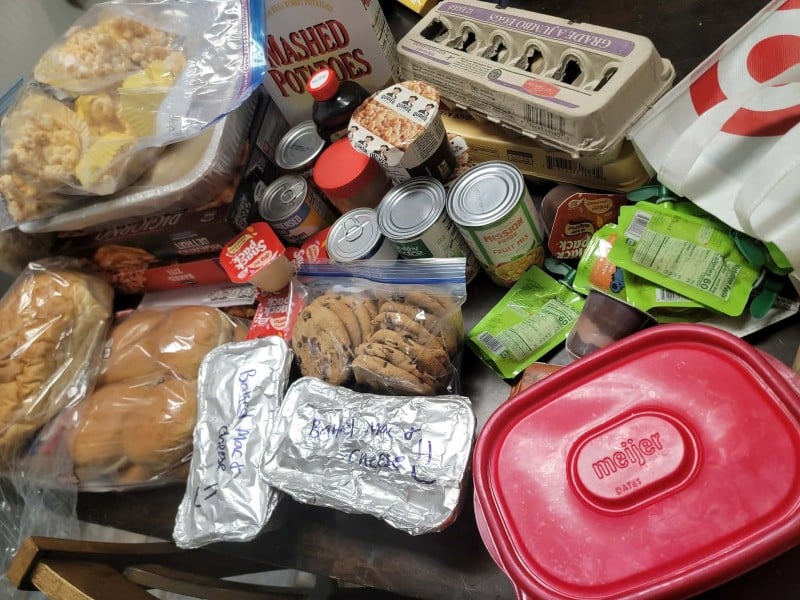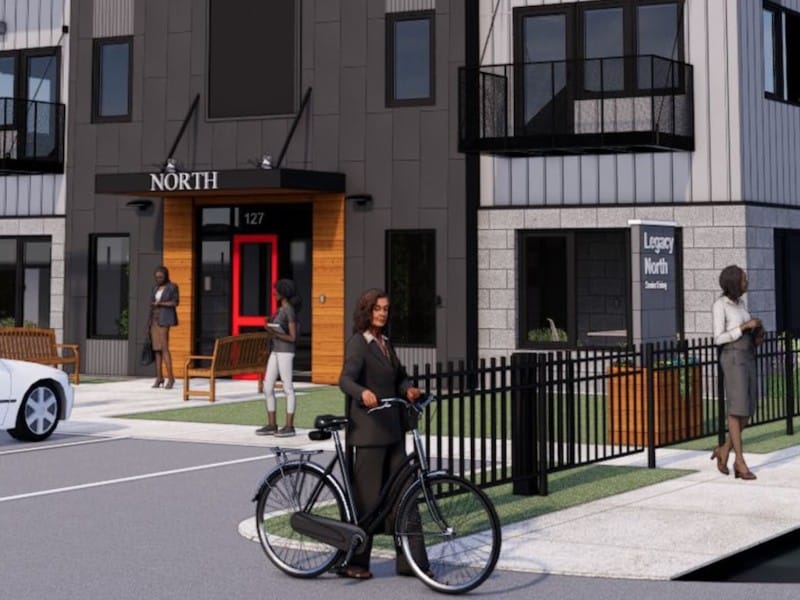Editor’s note: This story is part of Southwest Michigan Second Wave’s On the Ground Kalamazoo series.
We were not sure how it would go — 15 or so kids, and about 10 adults outside in the 95-degree heat. What were we doing? Taking photos of downtown Kalamazoo that would eventually end up displayed on several utility boxes around the community with the help of KalBlue, a Kalamazoo visual communication company, and public art duo Dreamscene Placemaking. The program is called All Things Possible, and it is a part of the Kalamazoo Parks and Recreation Summer Camps.
Annalee Roeder and Erik Vasilauskas, co-founders of Kalamazoo Dreamscene Placemaking, were the project leads for the art portion of this year’s All Things Possible program. The Kalamazoo Parks and Recreation website describes All Things Possible as “a program geared towards youth entering high school for the first time.”
It is meant to “expose youth to new and exciting opportunities including career interests, leadership, nature, and unique trips. The goal of this summer camp is to help youth be more prepared for high school and beyond.”
Second Wave sat down with Roeder and Vasilauskas, as well as a few of the students, and Parks and Rec employees to speak with them about their expectations of the program and the realities. I assisted two weeks in a row as a facilitator for the photography section and was impressed with the engagement of the youth.
One thing that stuck out most to me about the program was the perks. Students who complete All Things Possible, receive free driver’s training. For some youth and their families, this is a game changer. Driver education in Kalamazoo can cost almost $1,000 for both segments.
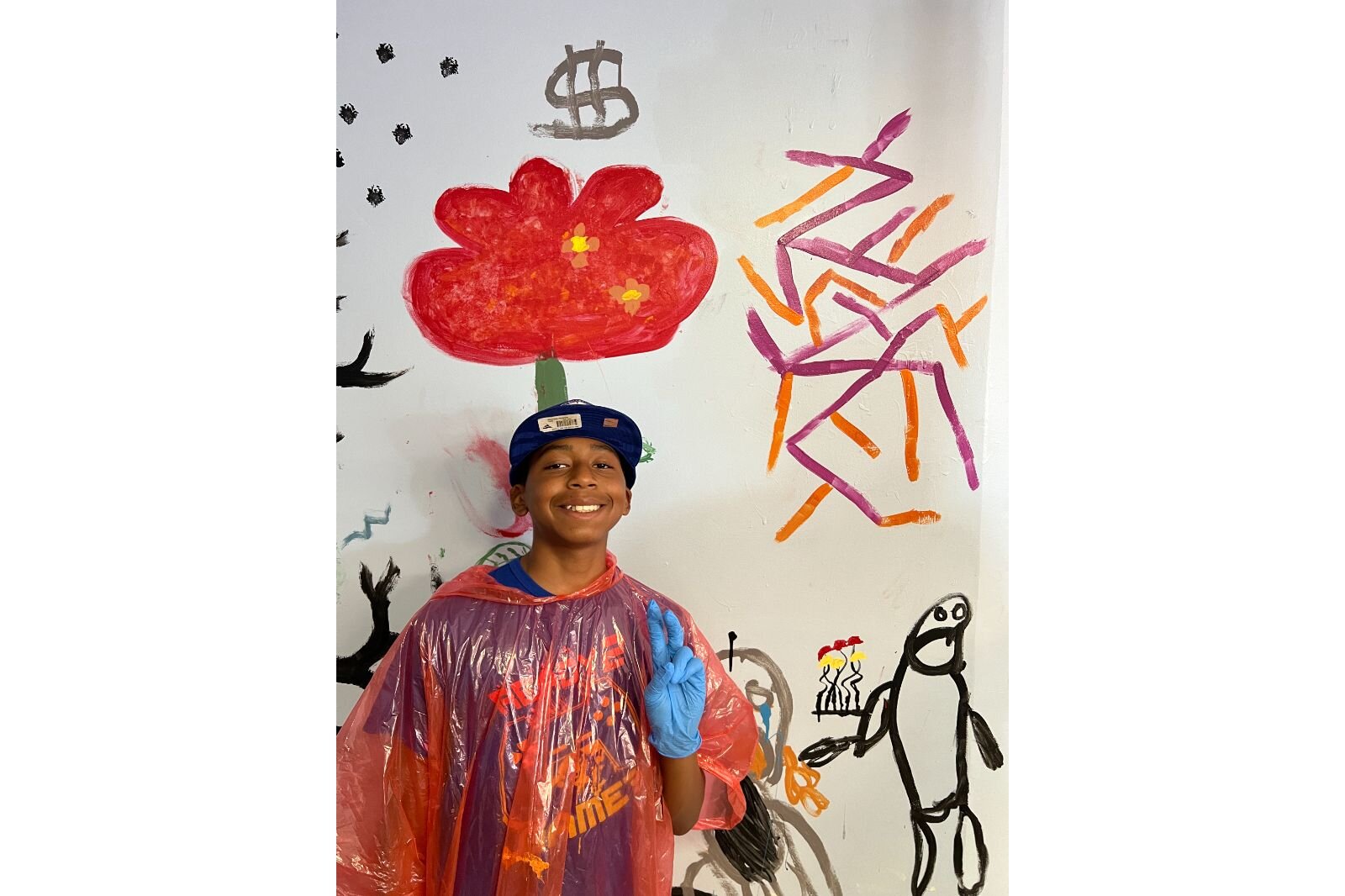
Second Wave spoke with Parks and Rec employee, and former All Things Possible student Chanel Wilson who says that not having to pay for driver’s ed can remove a burden for families and students, and really propel students forward. Wilson also made it very clear that programs like All Things Possible provide the infrastructure for positive networking that can help students stay focused throughout high school when various pressures can lead them astray.
Some of the youth in the program were there with their siblings. One of these families was the Reigles. I spoke with former Maple Street student Lane Reigle one day during the photography session after he had finished creating a collage using some photos he took with a vintage Polaroid camera combined with magazine cutouts.
Reigle participated in All Things Possible with his brother and sister, all of whom are triplets. He says that one of the main reasons the three were in the program is because “my mother didn’t want to pay for driver’s licenses for all three of us,” and “she wanted us to do something in the summer.” Reigle is 13 years old, headed into ninth grade at Loy Norrix. He says the program was fun and would have been more fun had it not been so hot. We both laughed at this, because … fair.
That being said, the heat is one of the main challenges to summer programming for youth. Parks and Rec even canceled a session this summer due to heat. Camps had to be held indoors or in the pool that day. Roeder thought of the heat as an opportunity, saying that it “gave a nice connection with the Kalamazoo Public Library. They opened their doors for the group, who were able to use the teen center, and refresh during our walk.” The entire group was very happy to take a break toward the end of our hot photography tour of downtown, adults and youth alike.
Vasilauskas, who moved from Dayton, Ohio to Kalamazoo in 2015 with his now-wife Roeder also considered the challenges of All Things Possible to be more opportunities than anything else. Vasilauskas says that murals and public art are things that he and Roeder seek out when they travel. This focus is also apparent in the youth programming they curate- The youth not only took photos to be displayed publicly downtown but also painted a mural at the Kalamazoo Youth Development Center.
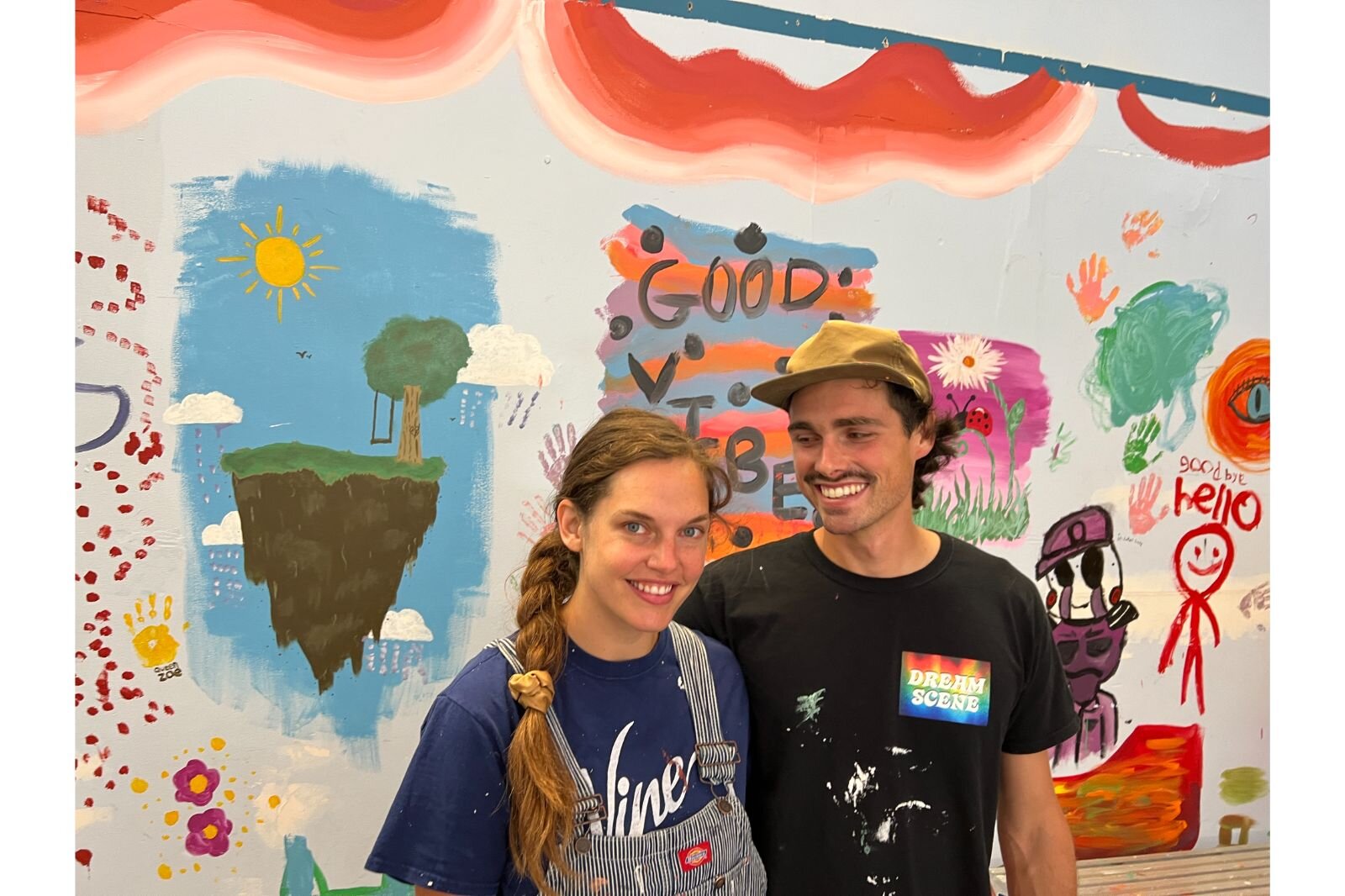
Vasilauskas also made the point that it was a special thing to “share our experiences as working artists in the community.” One of the main goals of the art portion of All Things Possible was to provide enrichment to the youth that comes from the area they already live in.
“The easy part is showing up,” Vasilauskas says with a laugh I asked him the same question I asked of Roeder about the challenges presented by programming for youth. He says that the difficult part comes with the planning: answering the various questions about what types of art to include, where to orchestrate the outings, and perhaps the most difficult — will the youth enjoy themselves and actually learn something?
Vasilauskas and Roeder definitely achieved their goal, at least according to 14-year-old incoming Loy Norrix freshman Chrus Wright.
“I think painting is really cool. I am more of a coloring person, but I still like to paint a lot.” Wright burst out excitedly when I asked what his thoughts were on the art program. We were having this conversation on the lawn outside of the Youth Development Center on Crosstown Parkway and Wright was wearing a paint-splattered disposable poncho. Wright says that his favorite part of the program was, “Creating your own ideas and making your own picture of what you think is cool.”

When interviewing Vasilauskas while he was facilitating at Western Michigan University Rec Center, he … told me, “On the photography side of things, I am always surprised that a group of 25 people on the same route can take a diverse perspective of photographs. We all sit in the same places, but we all photograph different things.” he says.
While walking with the youth and other adults through downtown Kalamazoo, Wright was very engaged using various types of cameras, and even his tablet brought from home. He used the tips and tricks provided by the facilitators by crouching down on the ground and trying different angles.
Roeder commented that “just seeing the enthusiasm for the instant film (Polaroid) reinspired her, got her excited about taking photos again,” using different angles and vantage points just as she encouraged the young folks to do.
One of these students was Davia McCoy, a 14-year-old Maple Street Magnet graduate headed to Kalamazoo Central. McCoy found herself the subject of many photos the day her group walked around downtown, as well as behind the camera snapping photos all along the walk. McCoy says that All Things Possible “helps me mentally… It makes me happier.” McCoy told Second Wave that the art portion is her favorite part of the entire program.
“It brings me out,” says McCoy.
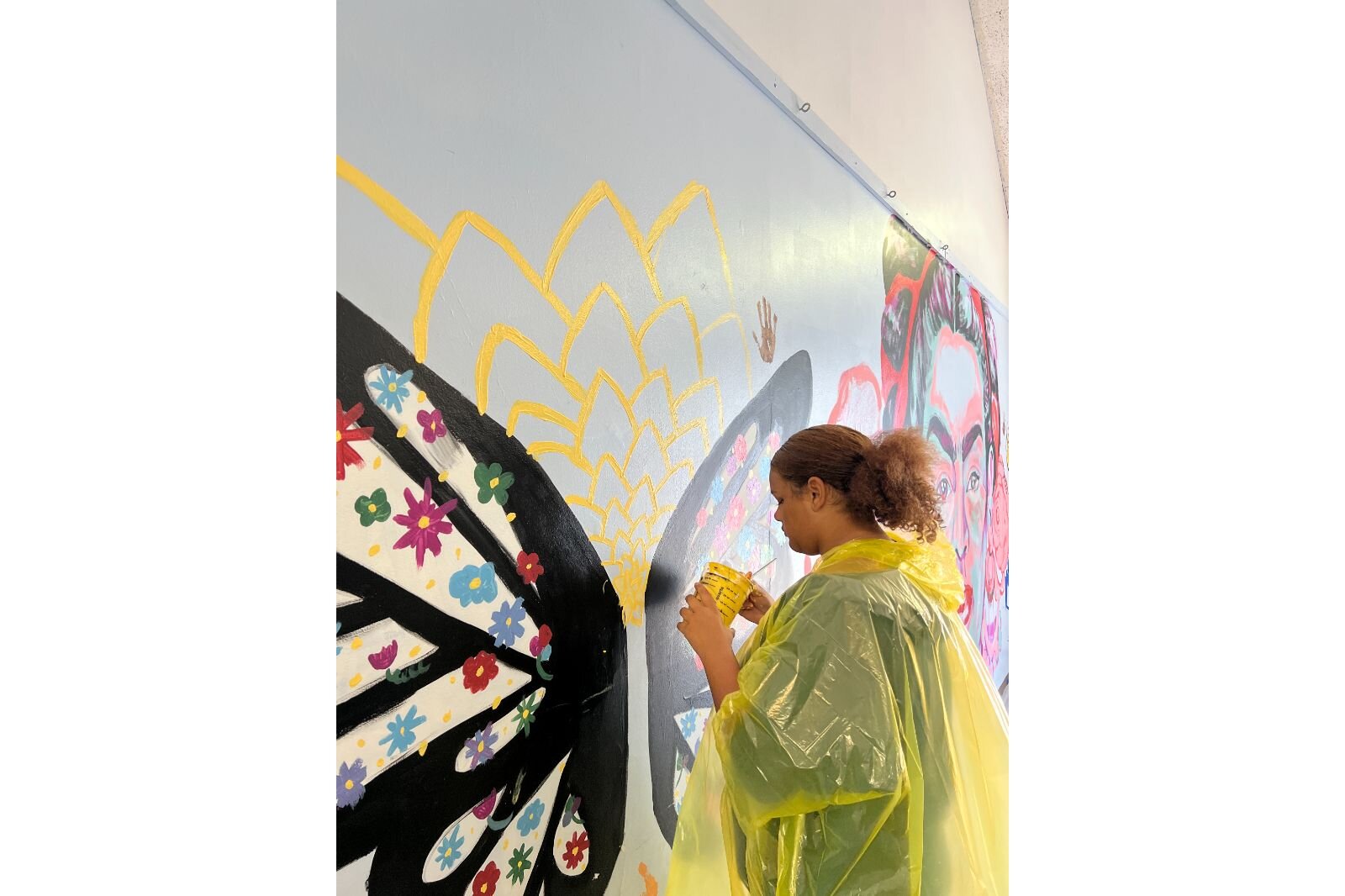
Parks and Rec’s Chanel Wilson calls attention to this aspect of the program while we sat outside the Youth Development Center where the All Things Possible group was painting. She tells me how important she thinks it is that the students step out of their comfort zone, and “get comfortable with being uncomfortable.”
Now that summer is ending, the utility boxes displaying the students’ photographs will be installed soon. The change of seasons also means the students have started high school, which is what All Things Possible was preparing them for. Every single student interviewed says the same thing: They are nervous and excited to leave middle school. In the same way, all of the adults interviewed want the youth to know that they have an important voice, voices they hope stay strong through the adversity of high school and what is more, growing up.


